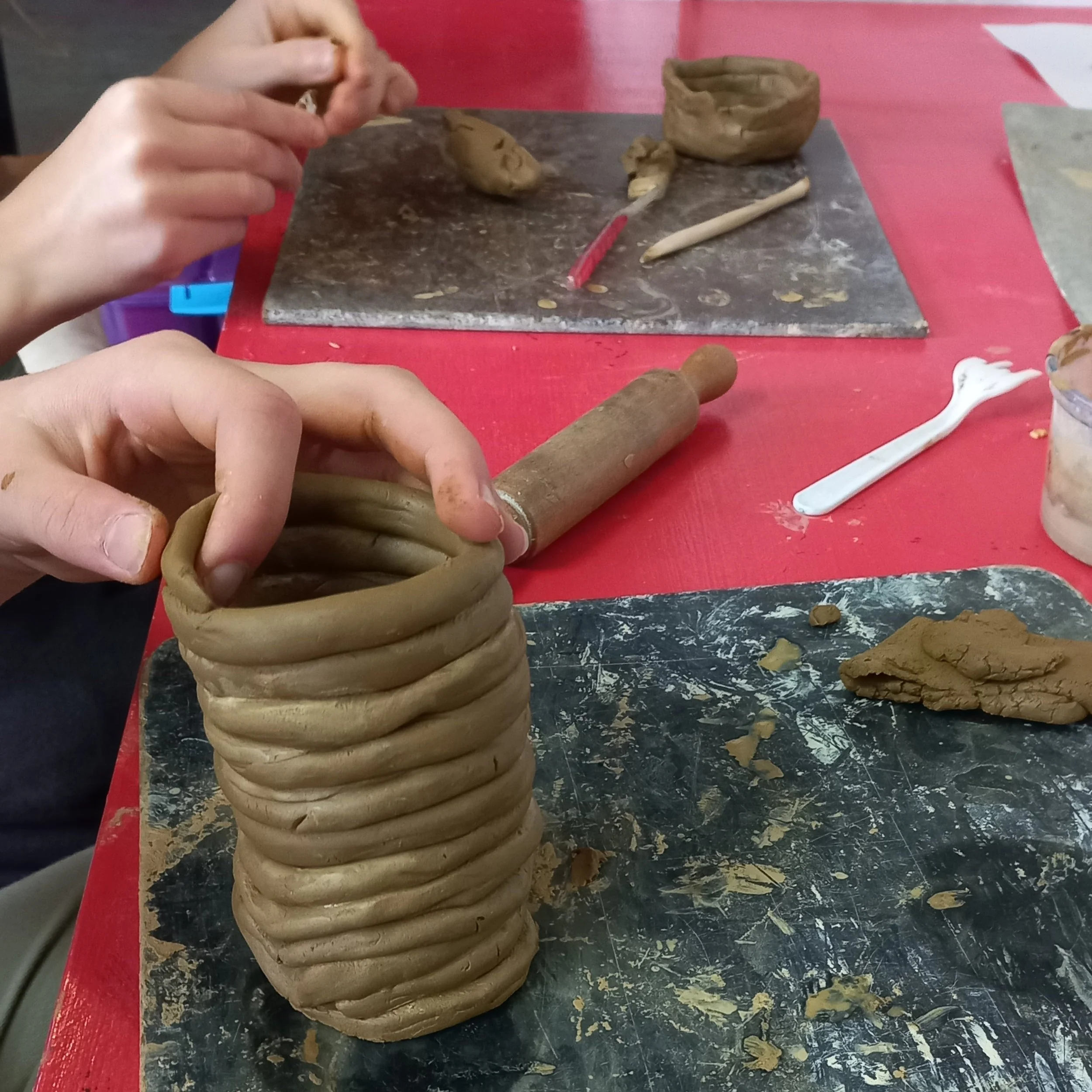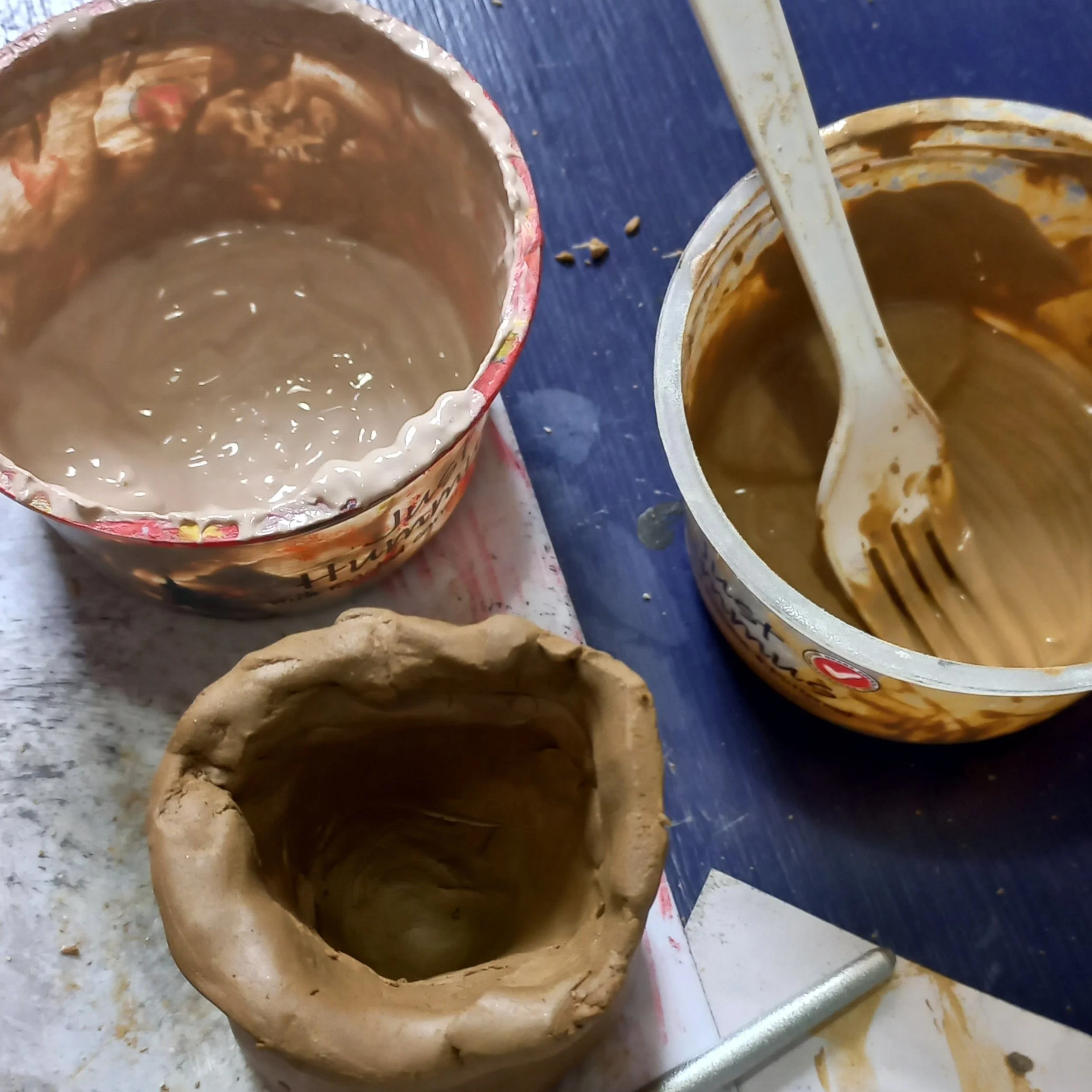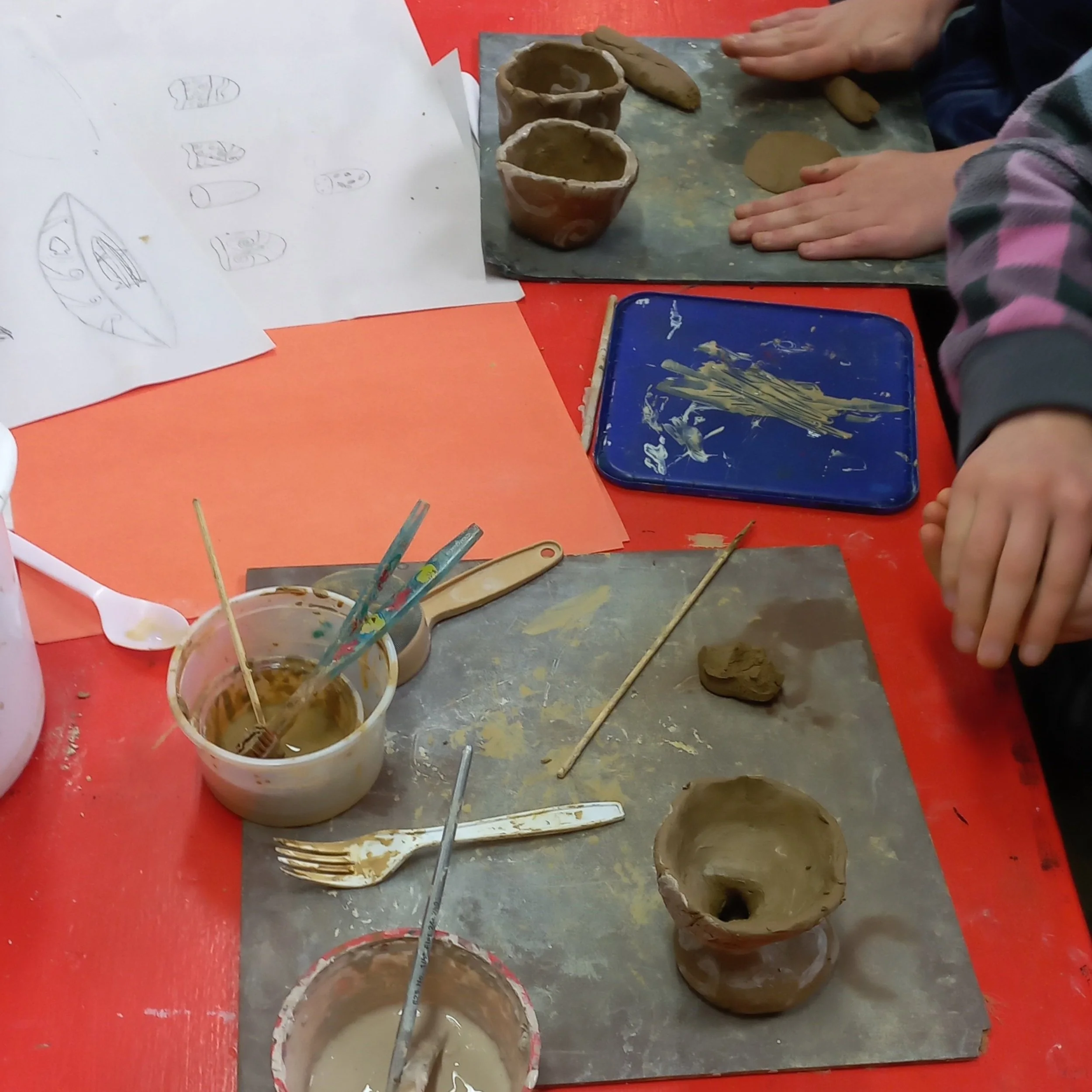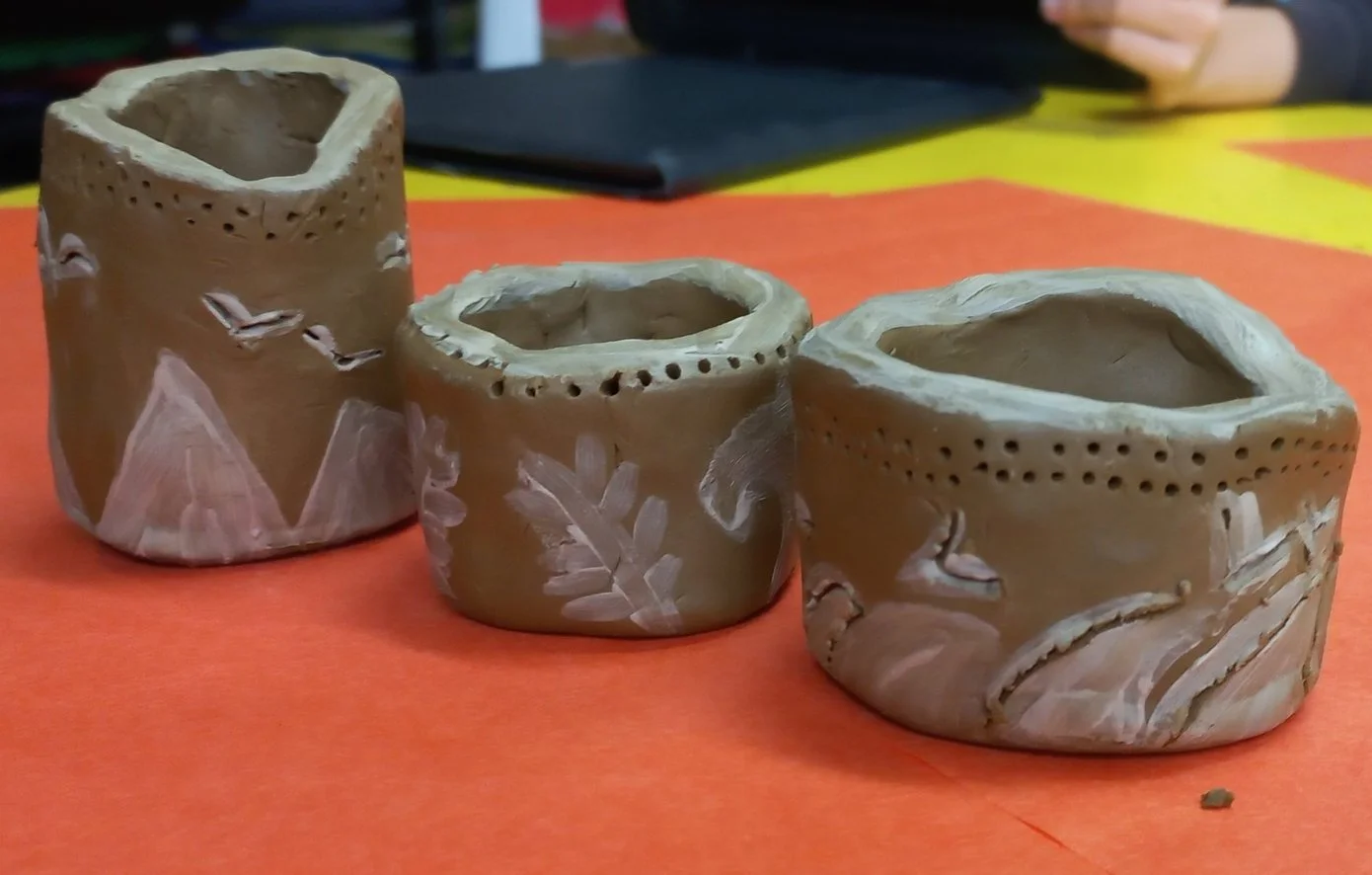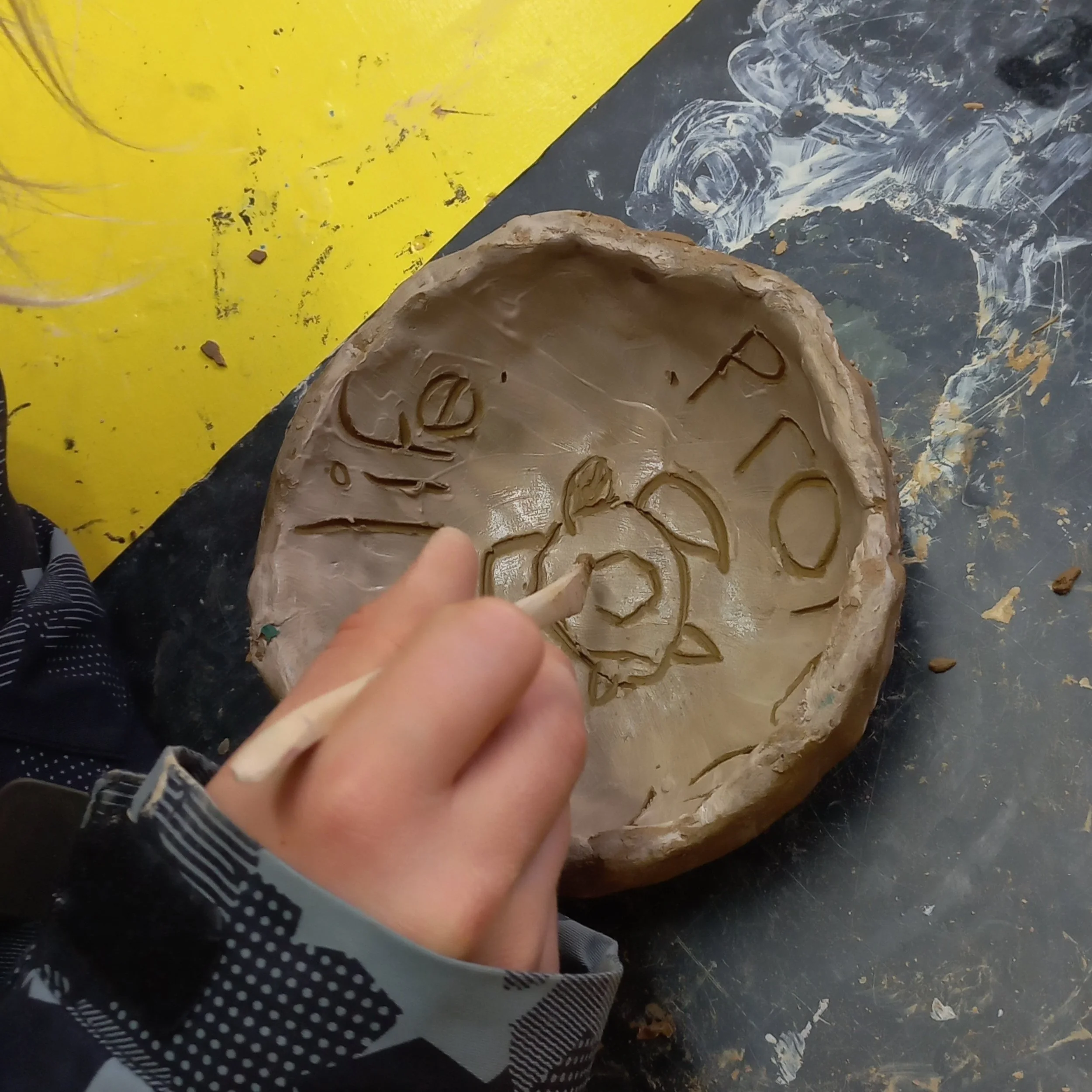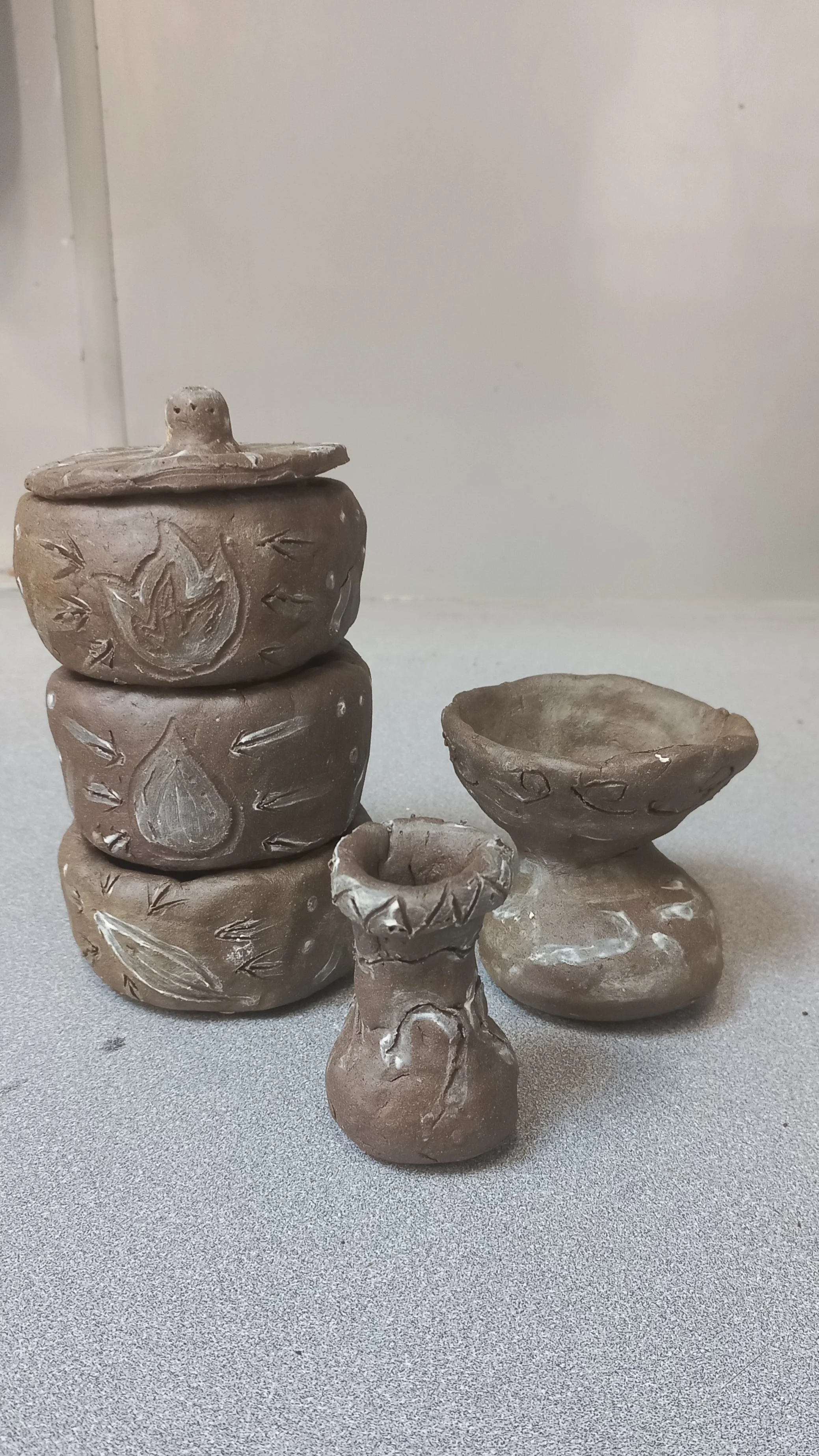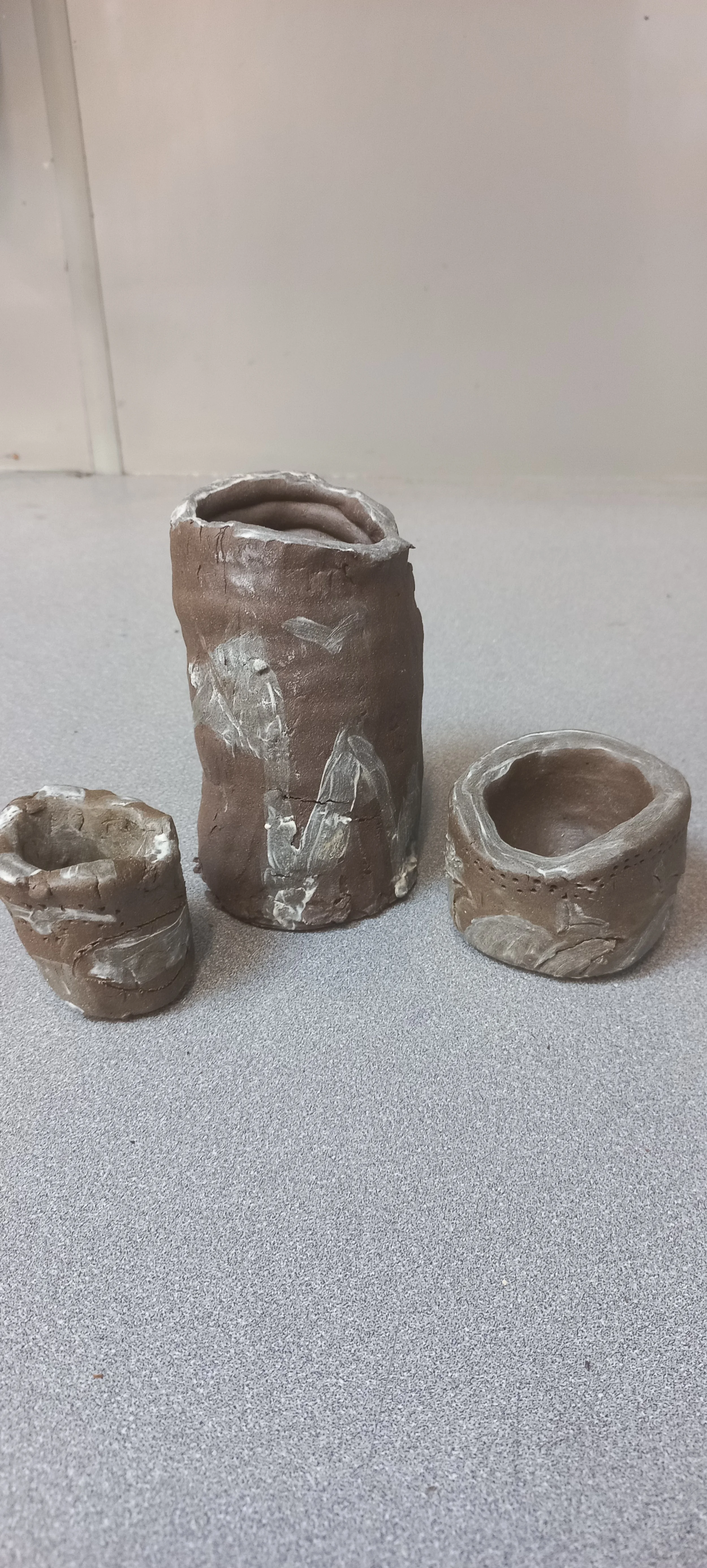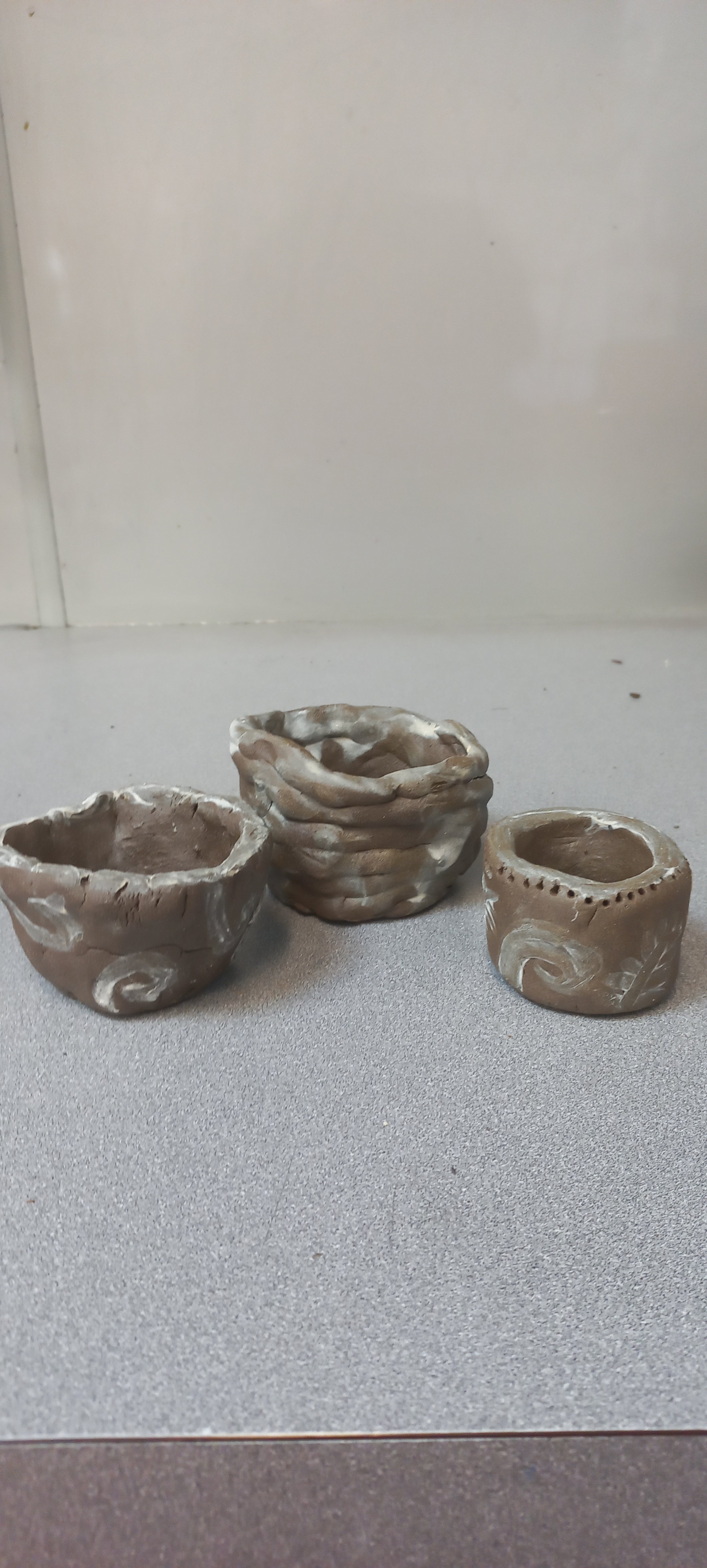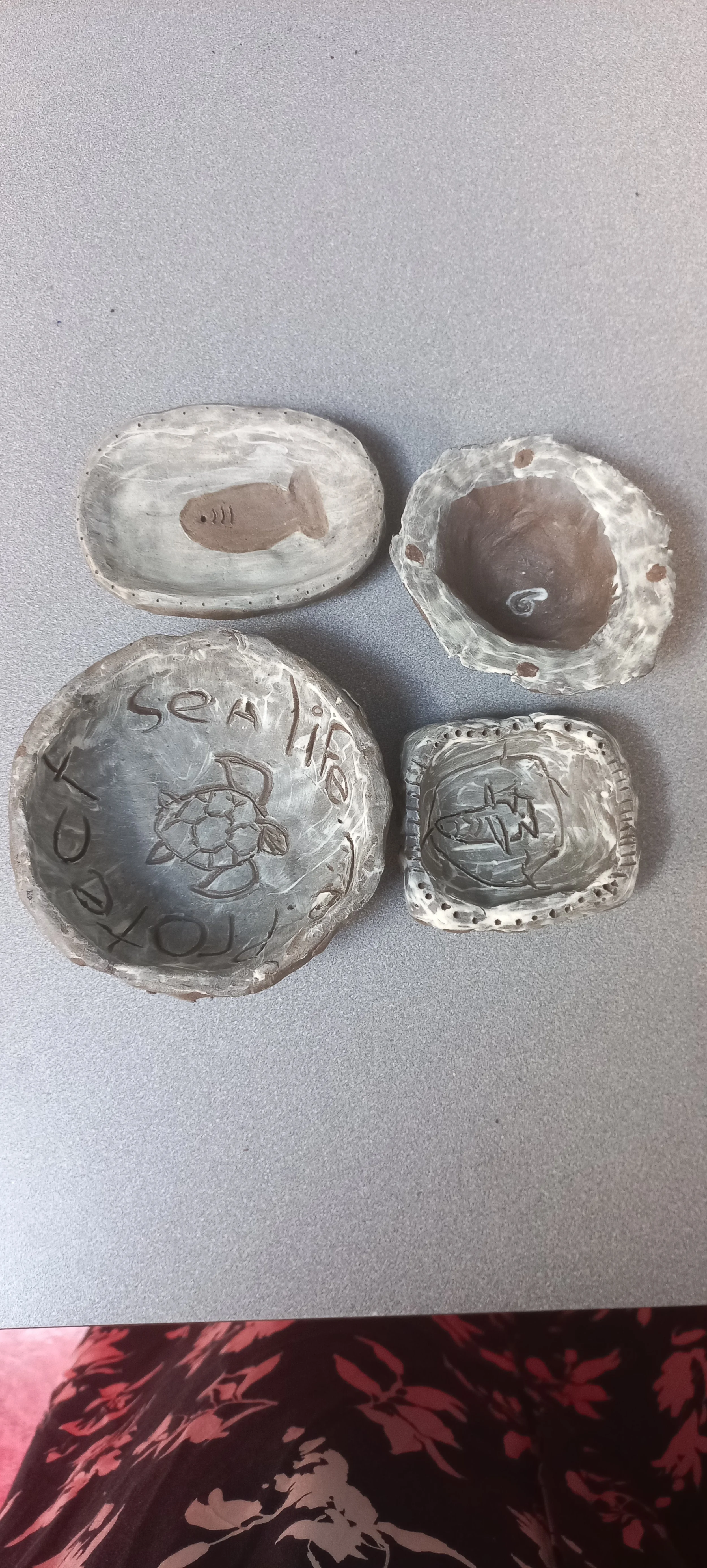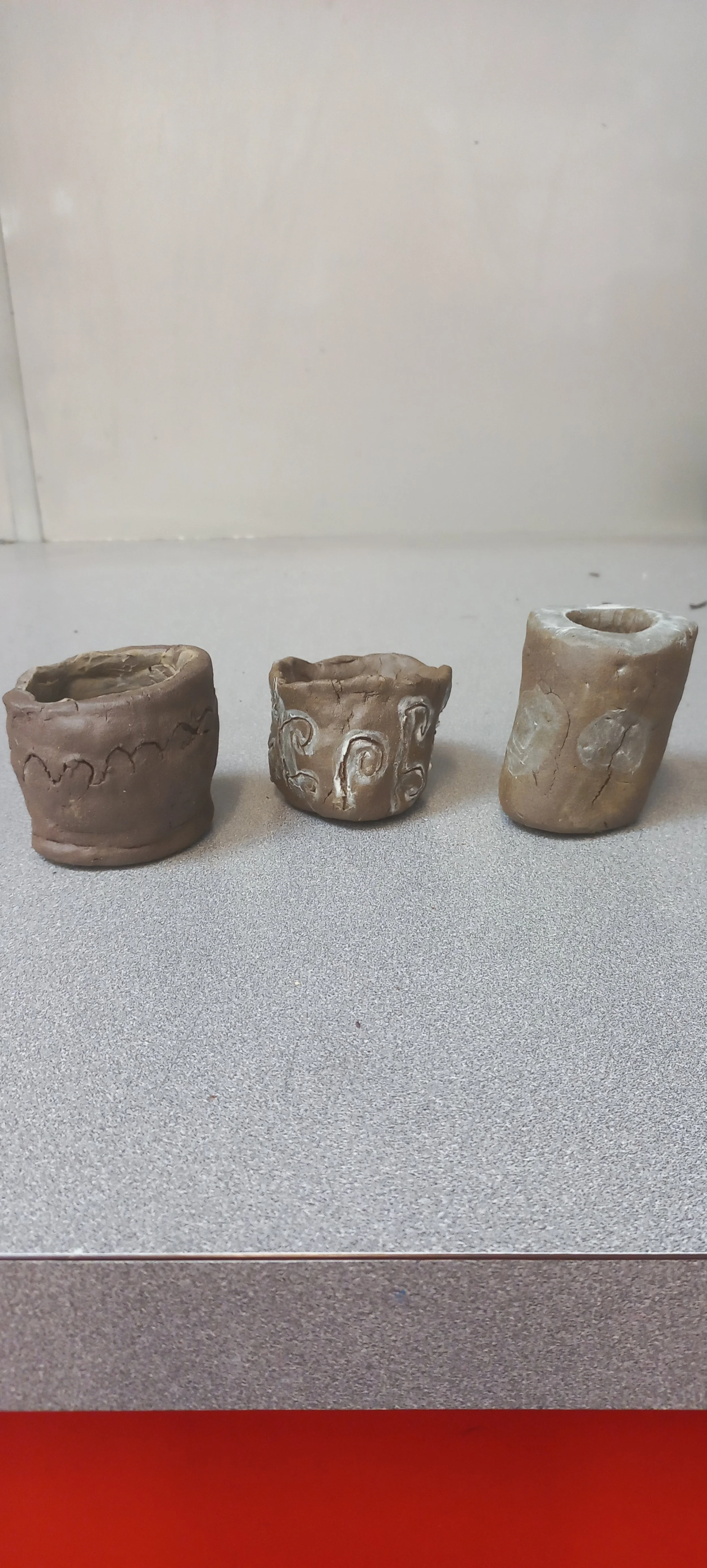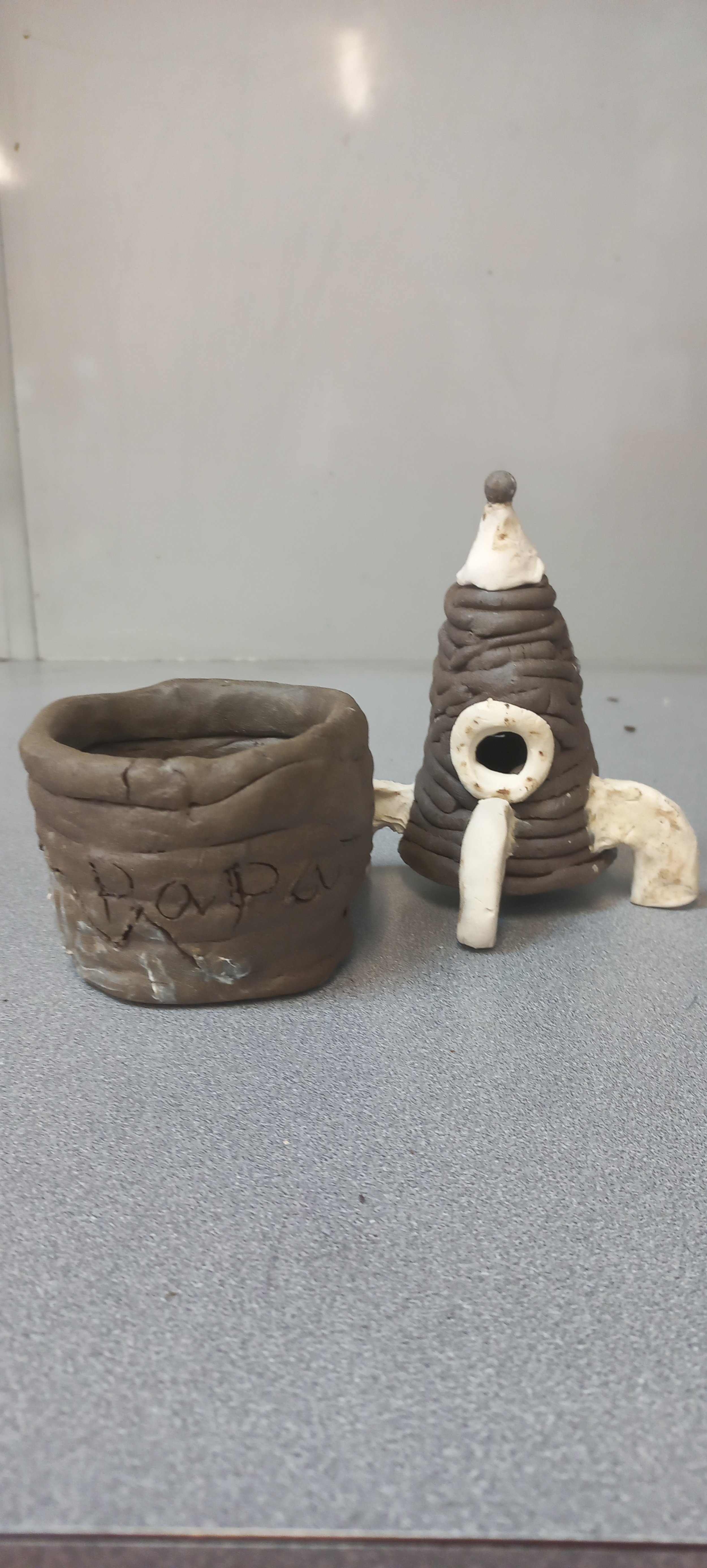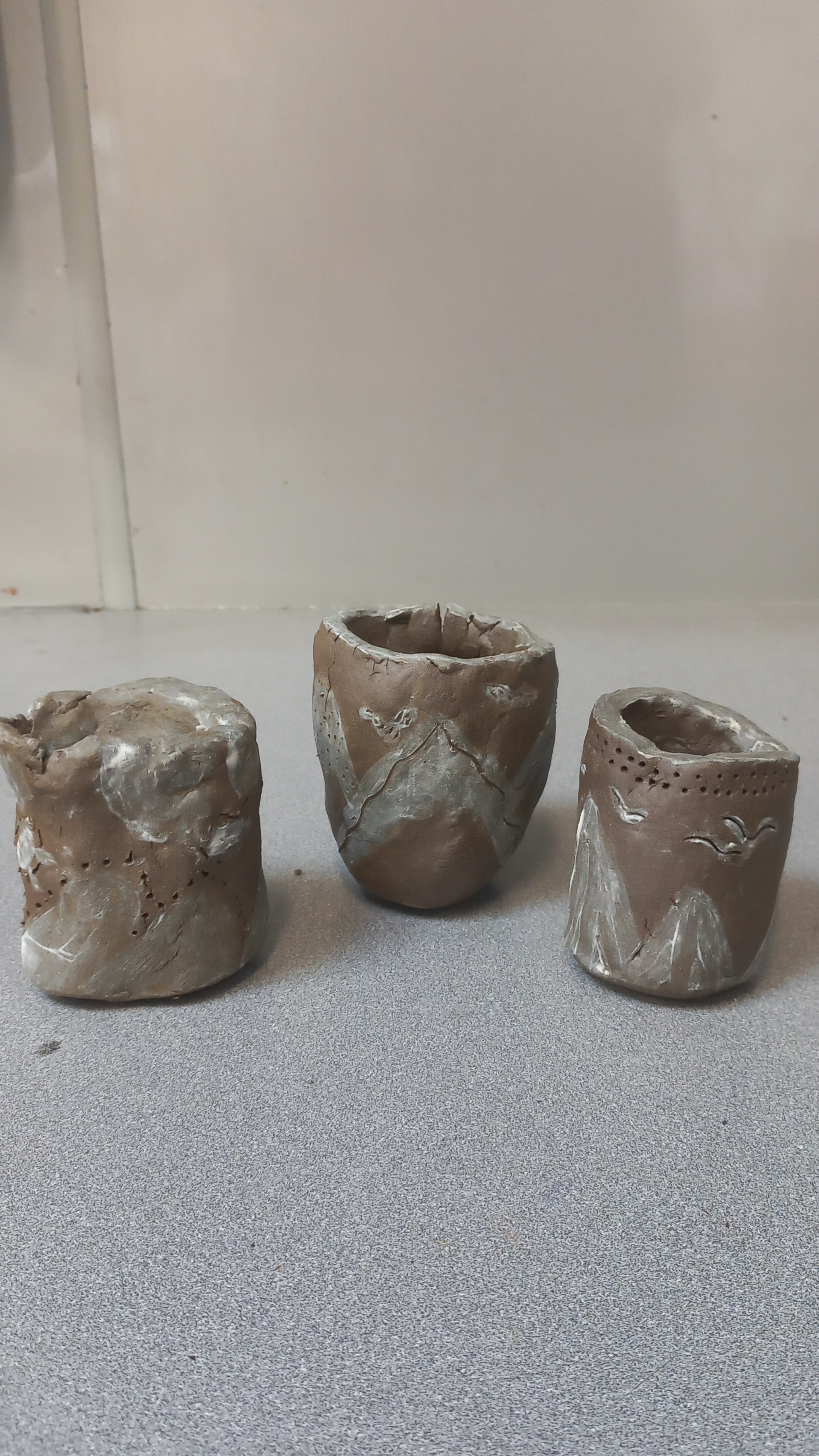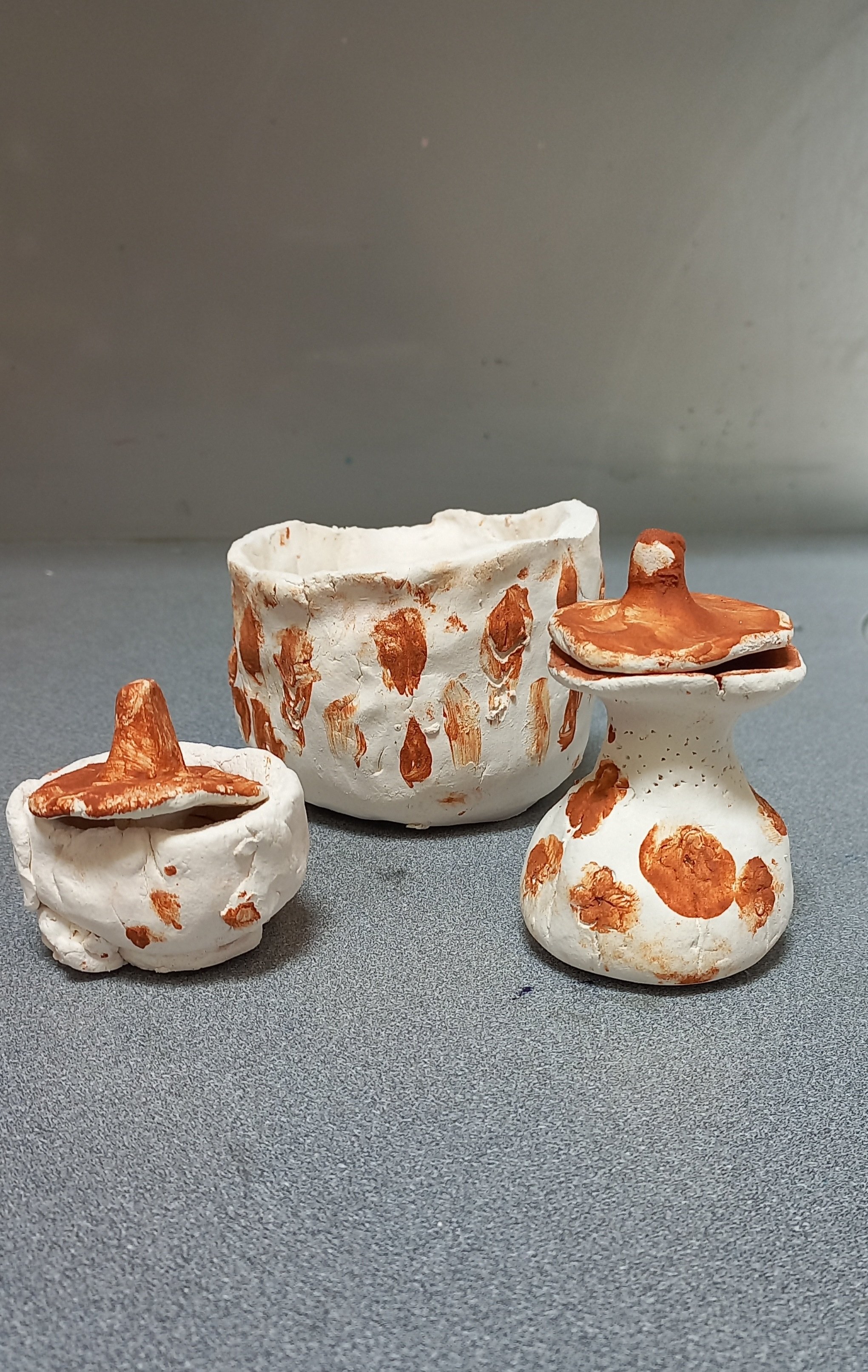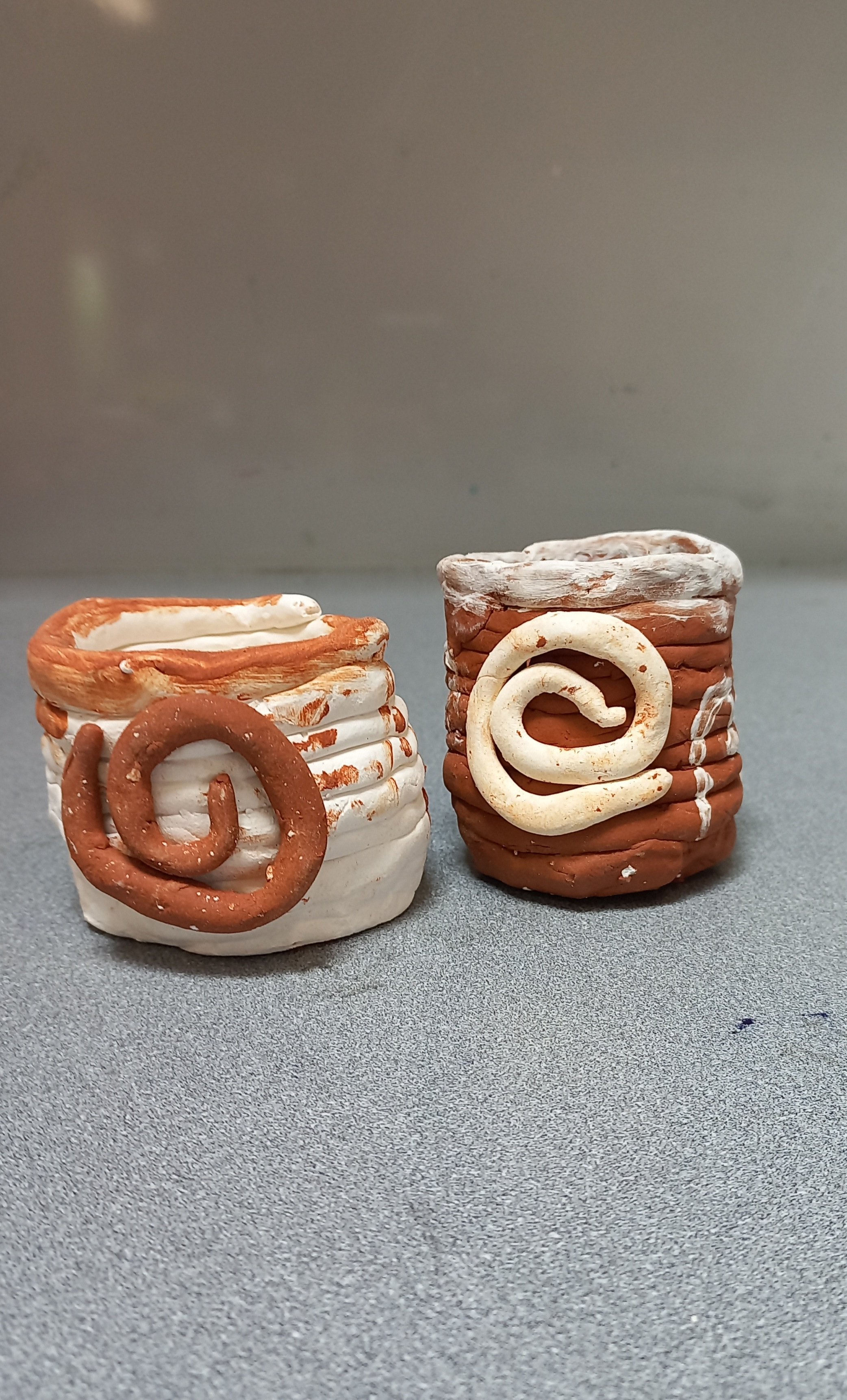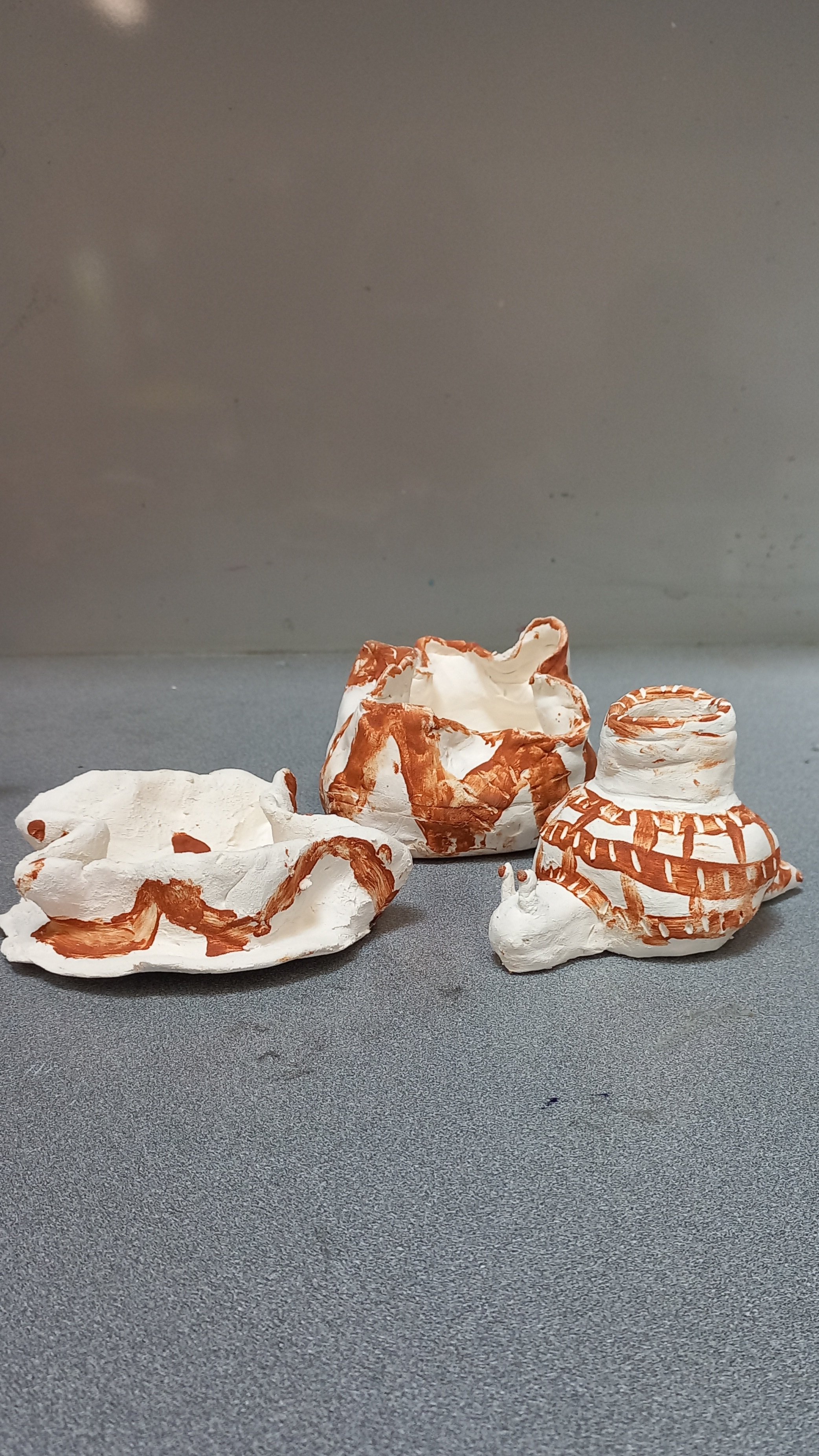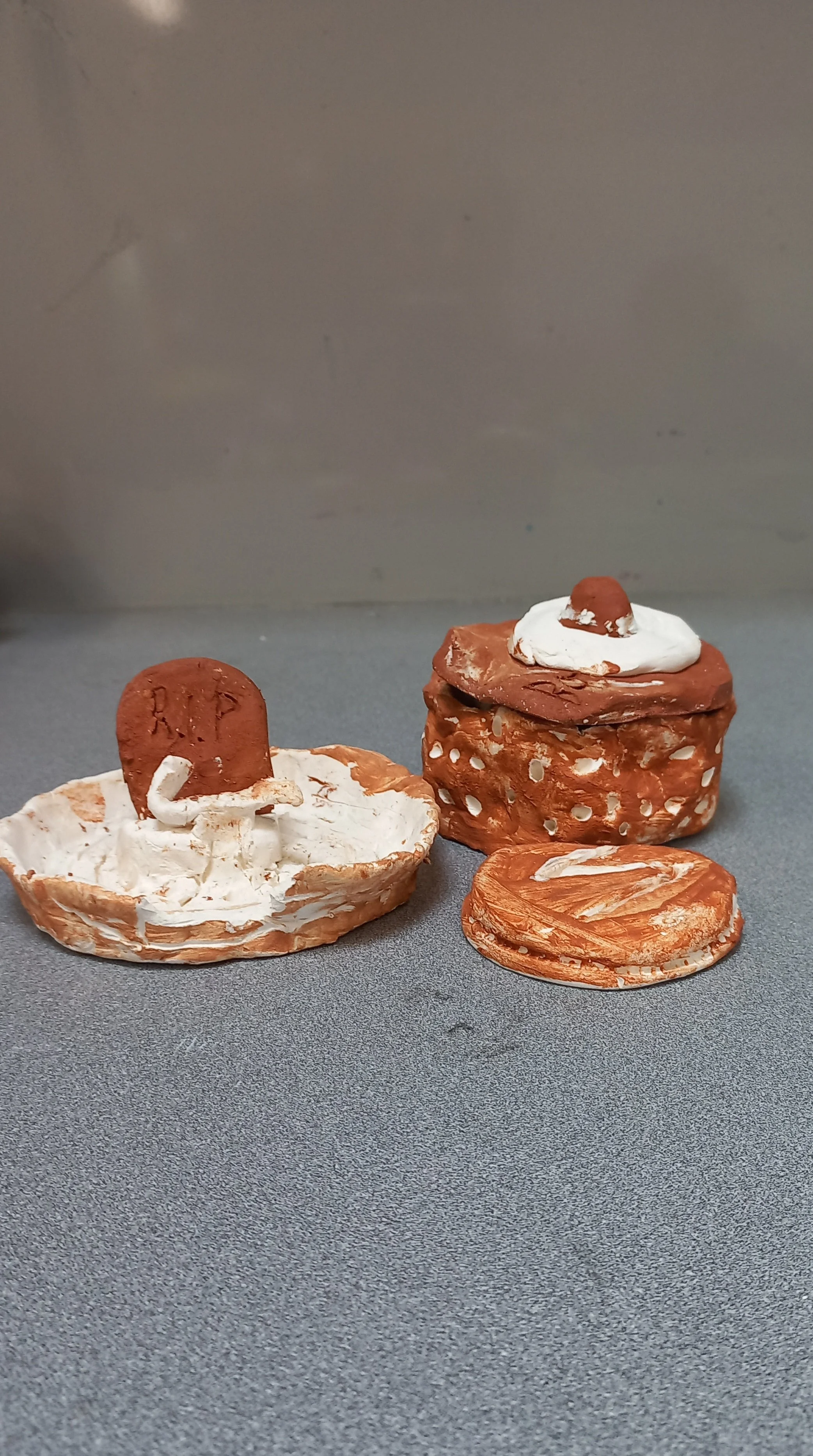Papatūānuku and the gift of uku
In Aotearoa uku (clay) is a considered a special resource as it comes directly from Papatūānuku, the earth mother. It seemed fitting that the students use uku to share a message about protecting our natural environment. The students explored the concept of kaitiakitanga, which is the act of guarding the environment based on a Māori world viewpoint.
Kids understand that caring for our environment is an obvious necessity. They hold a refreshingly simple viewpoint in contrast to that of adults, where the issue of climate change and responsiblity for our environment has become increasingly complicated. The students brainstormed ideas about what it means to be kaitiaki of this land. They came up with beautiful ideas around protection of our waterways and fishes, how we treat nature and animals, climate action and waste minimisation.
Before the students designed their clay pieces, they studied examples of works from three Māori uku artists, Wī Taepa, Colleen Waata Urlich and Davina Duke. The students studied the forms of the vessels and we discussed how they may have been built. The students enjoyed the different structures, particularly those of Wī Taepa.
Slip is a watered down version of clay that is used to join clay together. It is also used for decorative purposes. In both Davina Duke’s Te Ara Waenganui (Current Pathway), 2020 and Colleen Waata Urlich’s Ipu Tāniko, 2007 coloured clay slips are used to decorate the clay pieces. We had two clay colours to work with for this lesson, brick red and classic white, so we mixed contrasting slips to decorate the clay pieces. The photos shown below are of the brick red clay with white slip painted on top.
The students also noticed etching on Wī Taepa’s Mahere Mapping Series: Untitled 2002. He used a simple steel nail to make delicate and intricate markings on the piece. The students used skewers and other tools to cut into the clay to mirror this effect .
Students created a range of different vessels using the coil or pinch pot technique - some used both of the techniques. Each time that I taught this lesson the students amazed me with their unique ideas. Below are the finished vessels. You can see where the students have experimented with etching and slip techniques. I love how these have turned out.
As I progressed with the lessons I began to let the students experiment more widely with the design of their vessels. I also gave more options for choice with which colours clay the students could use. Examples of these works are in the following photos. These works were also fired at a lower temperature. Note the change in colour of the fired clay even though the clay was exactly the same!
